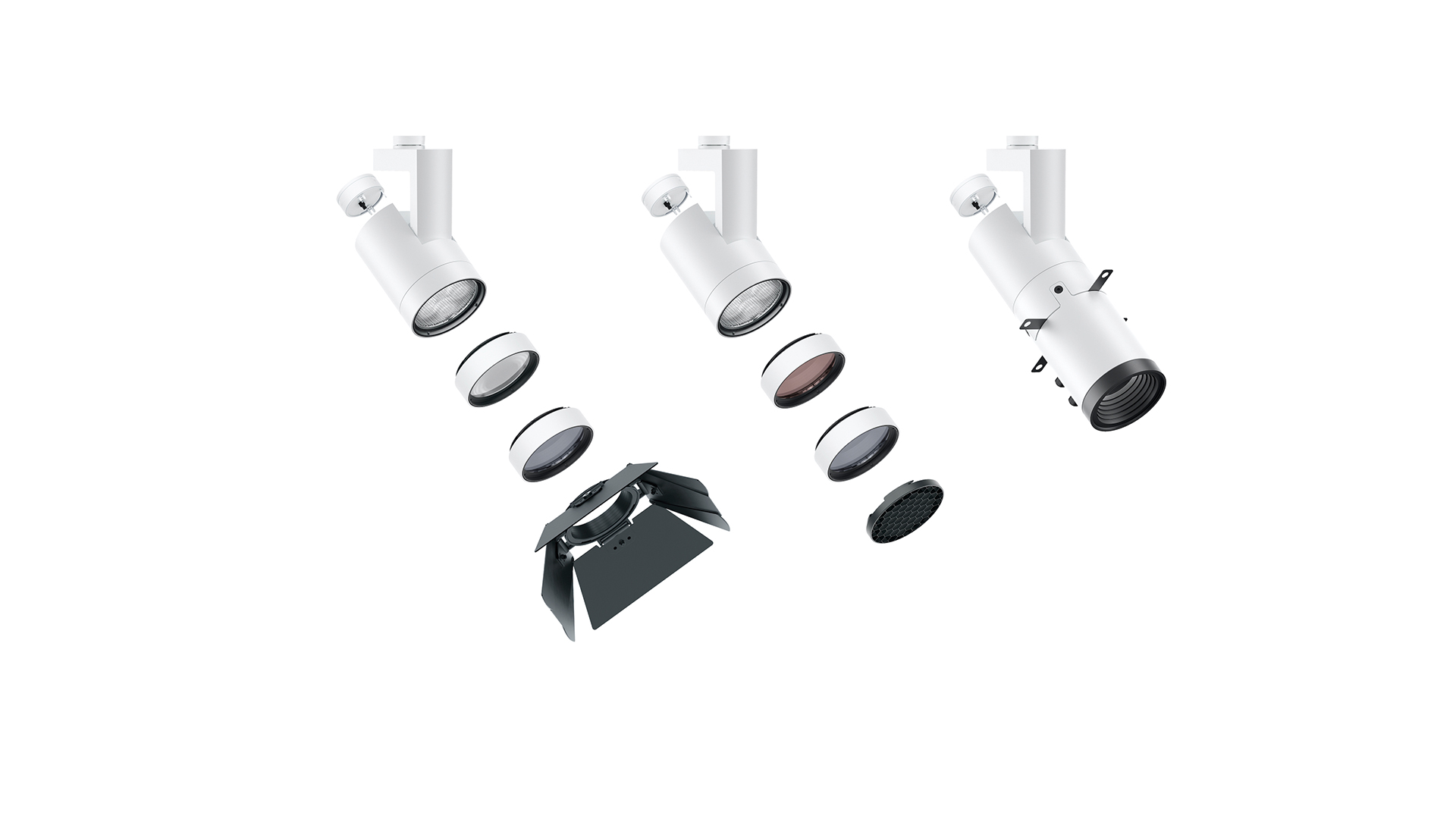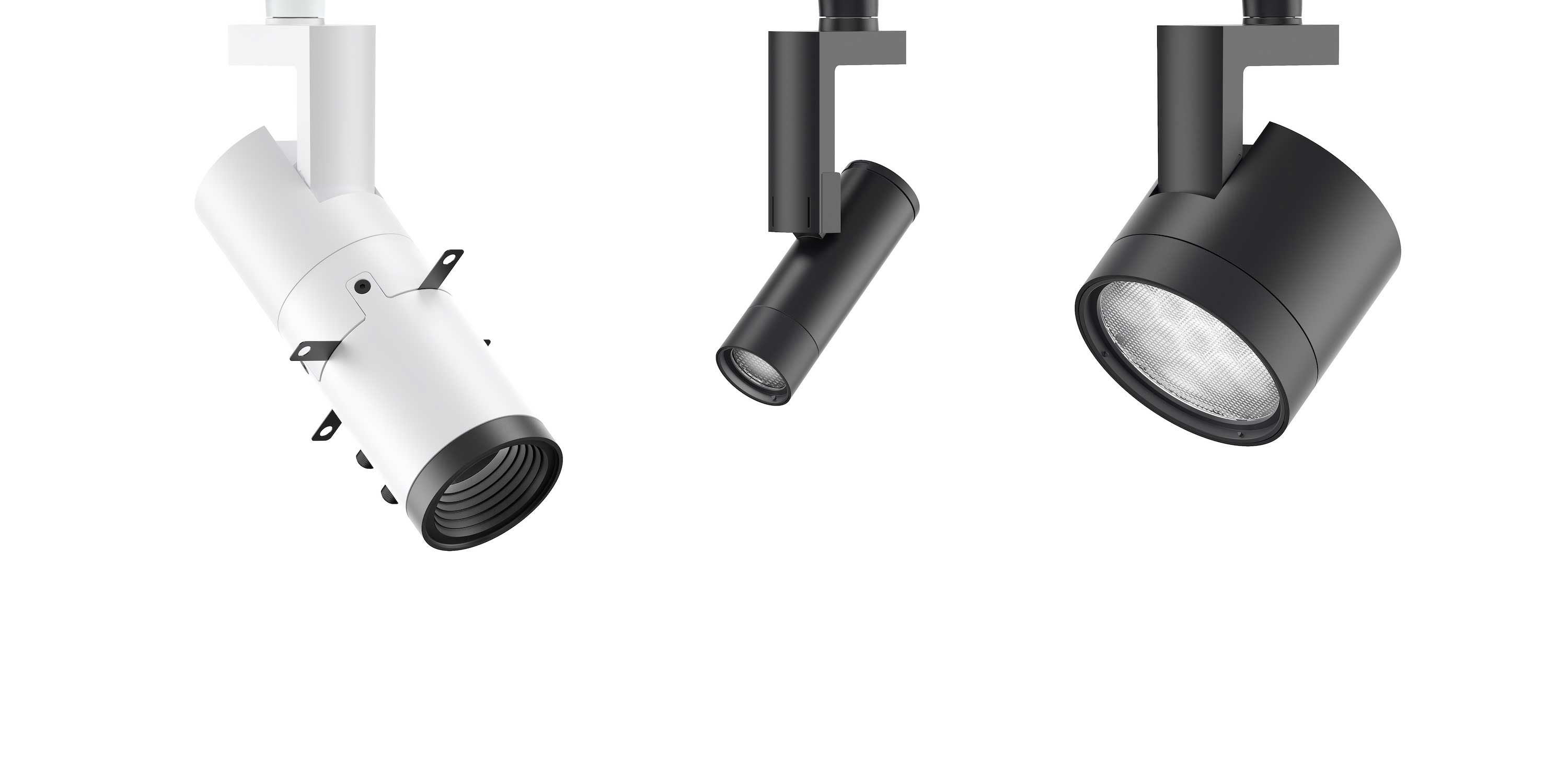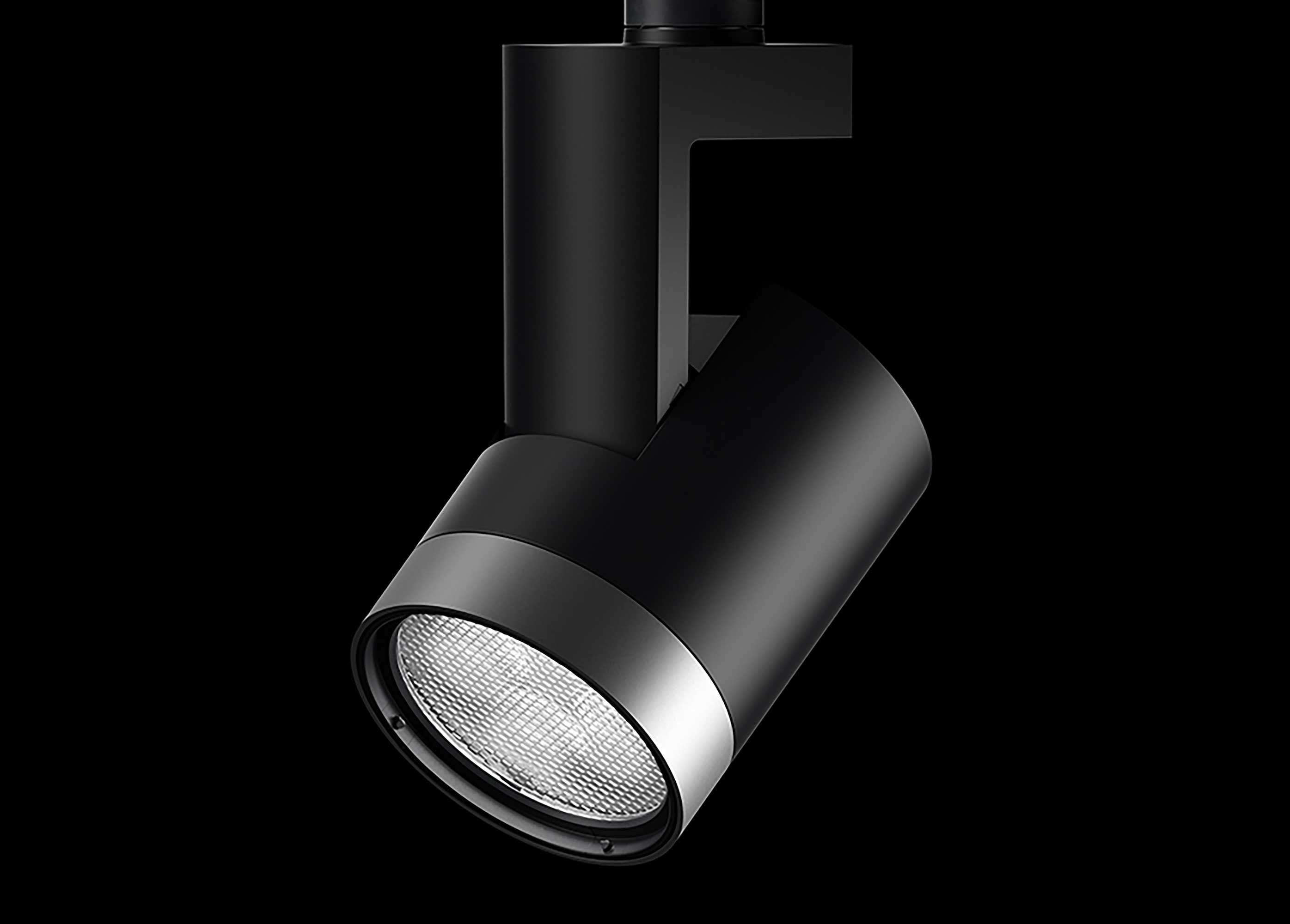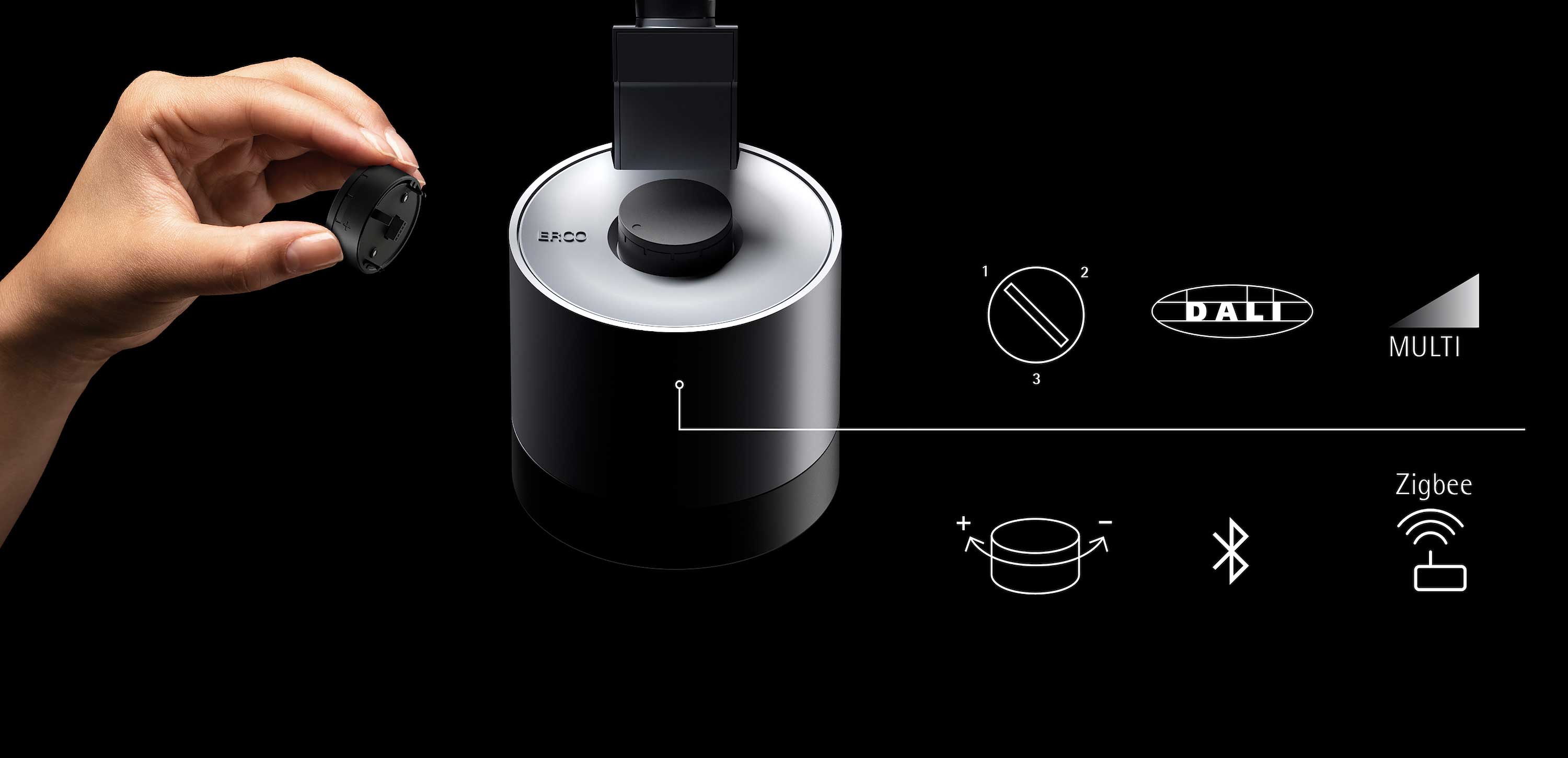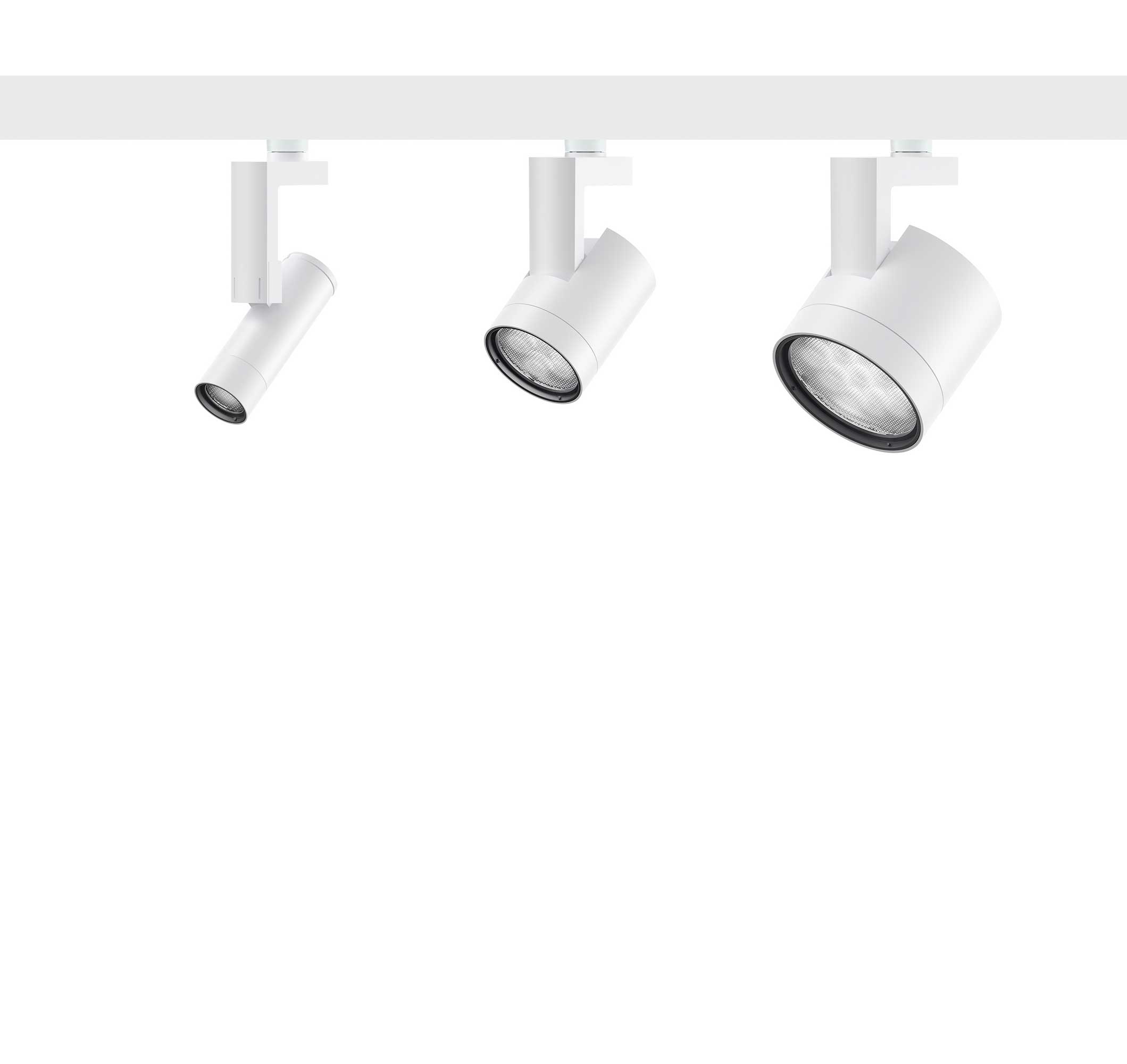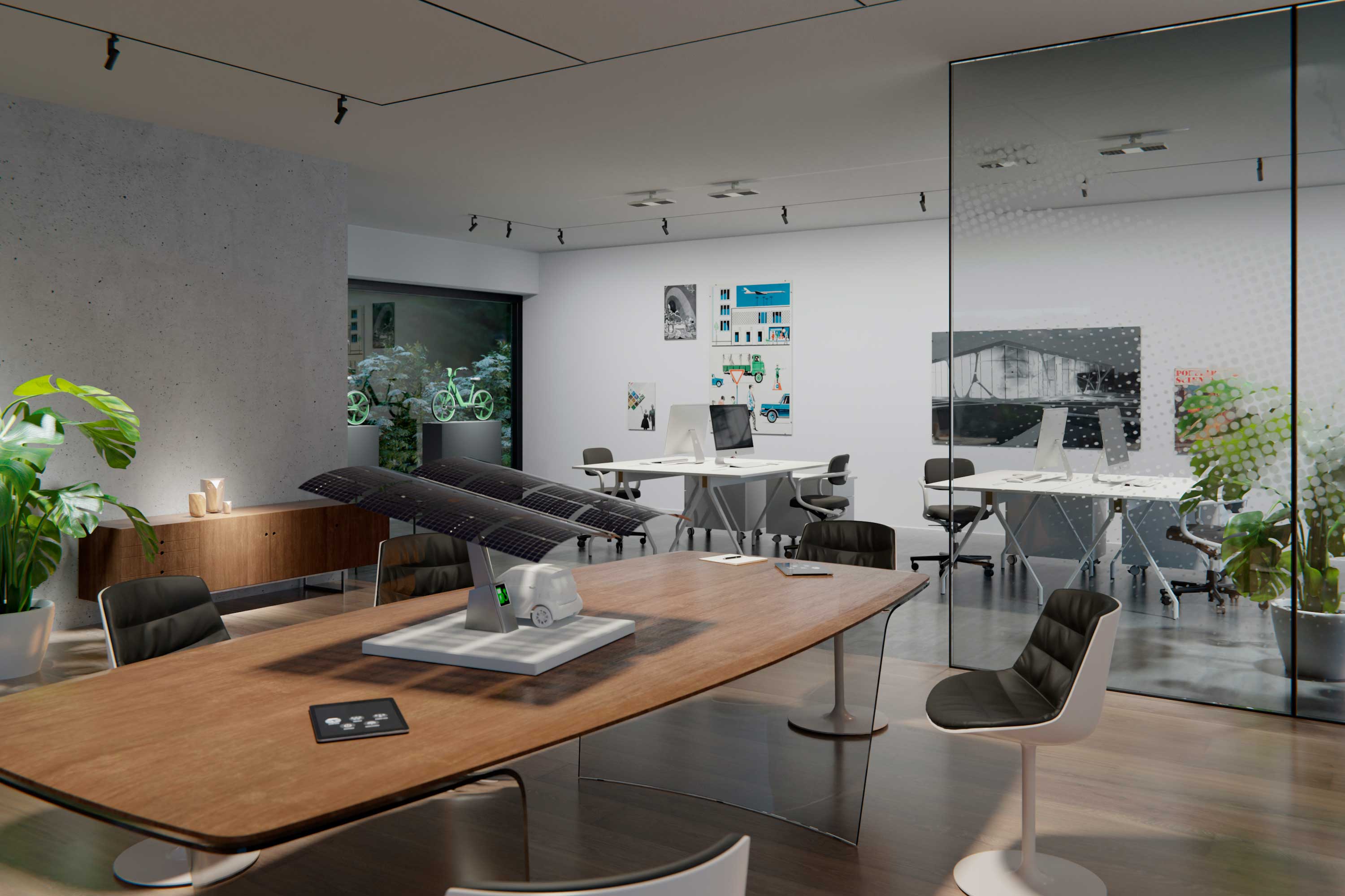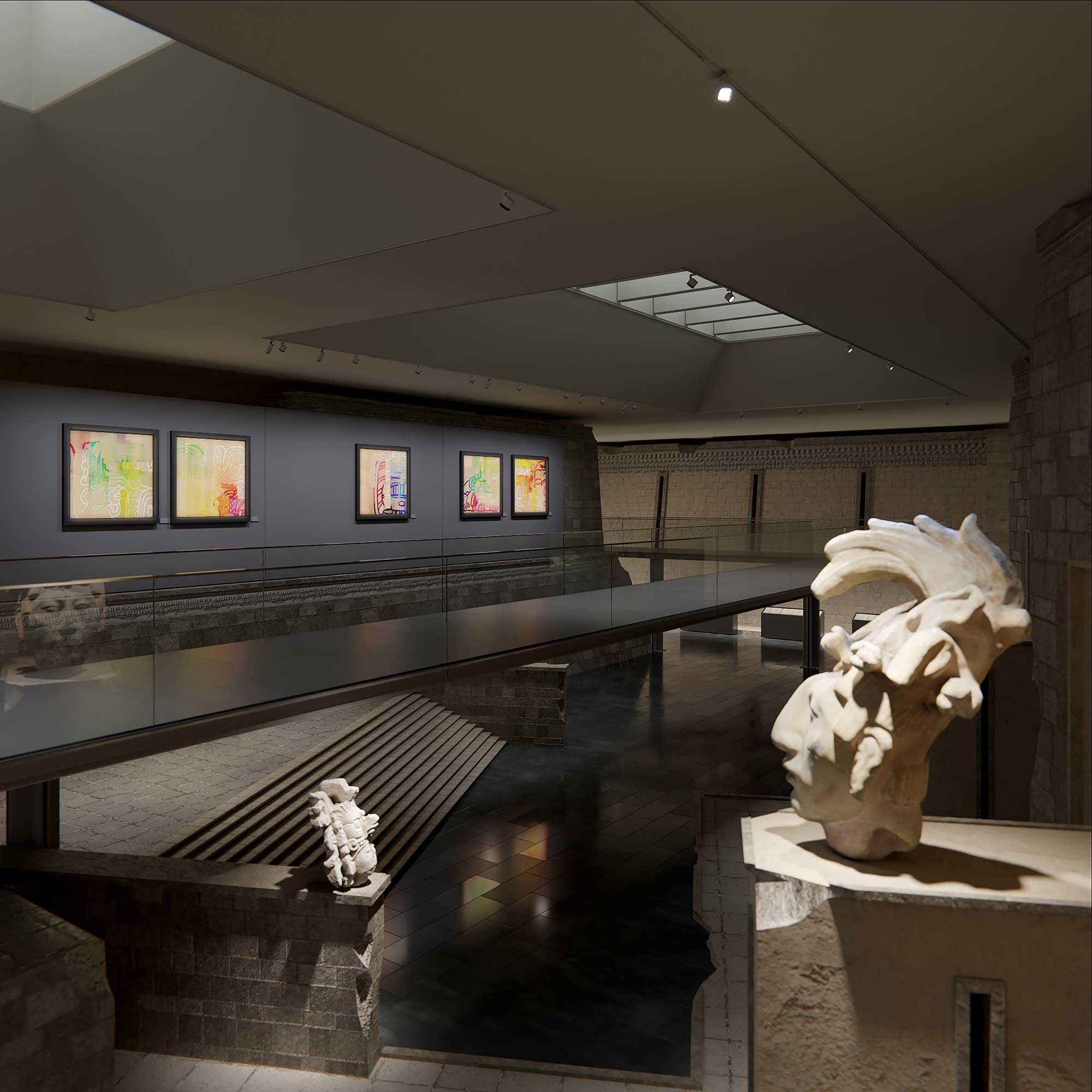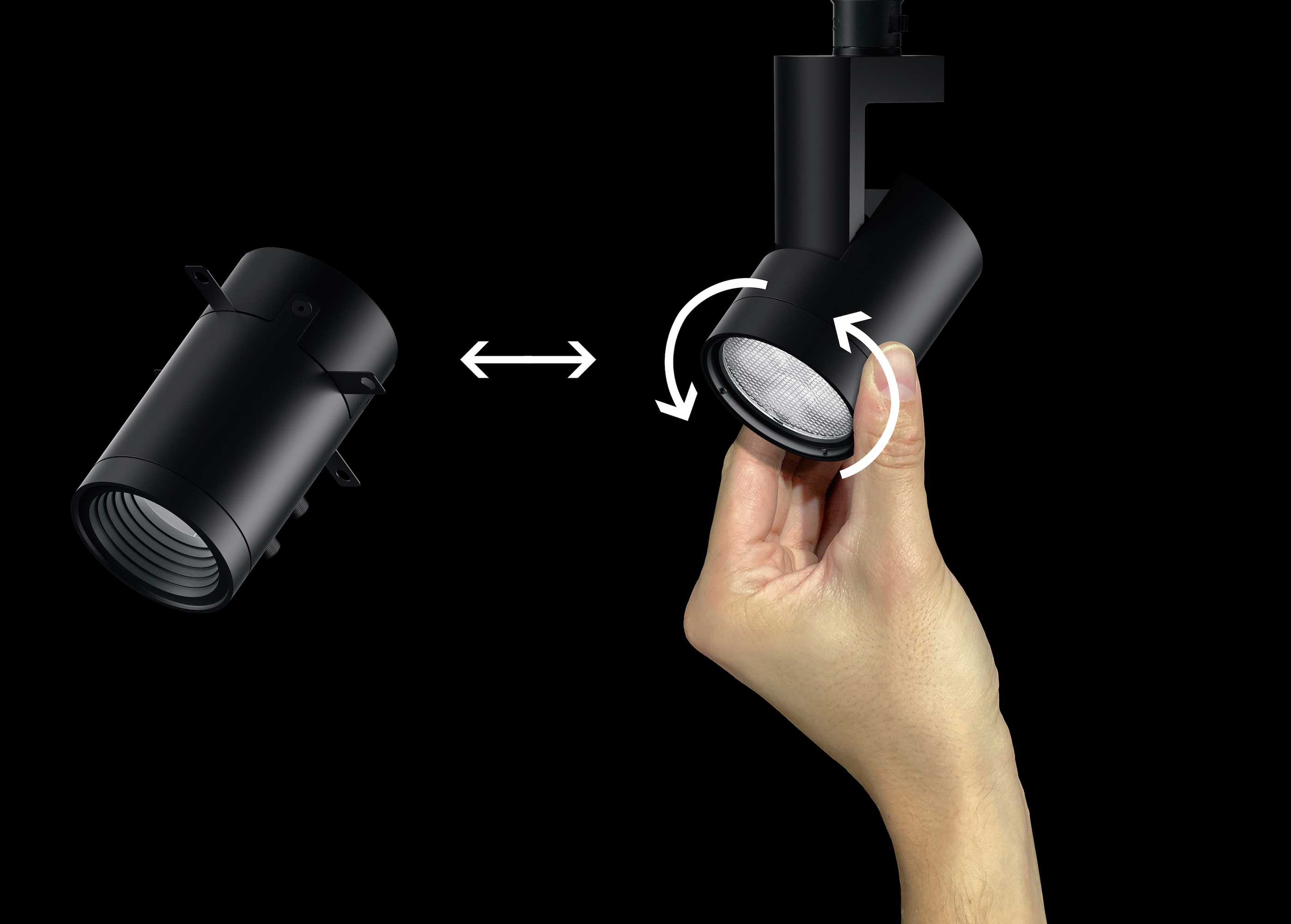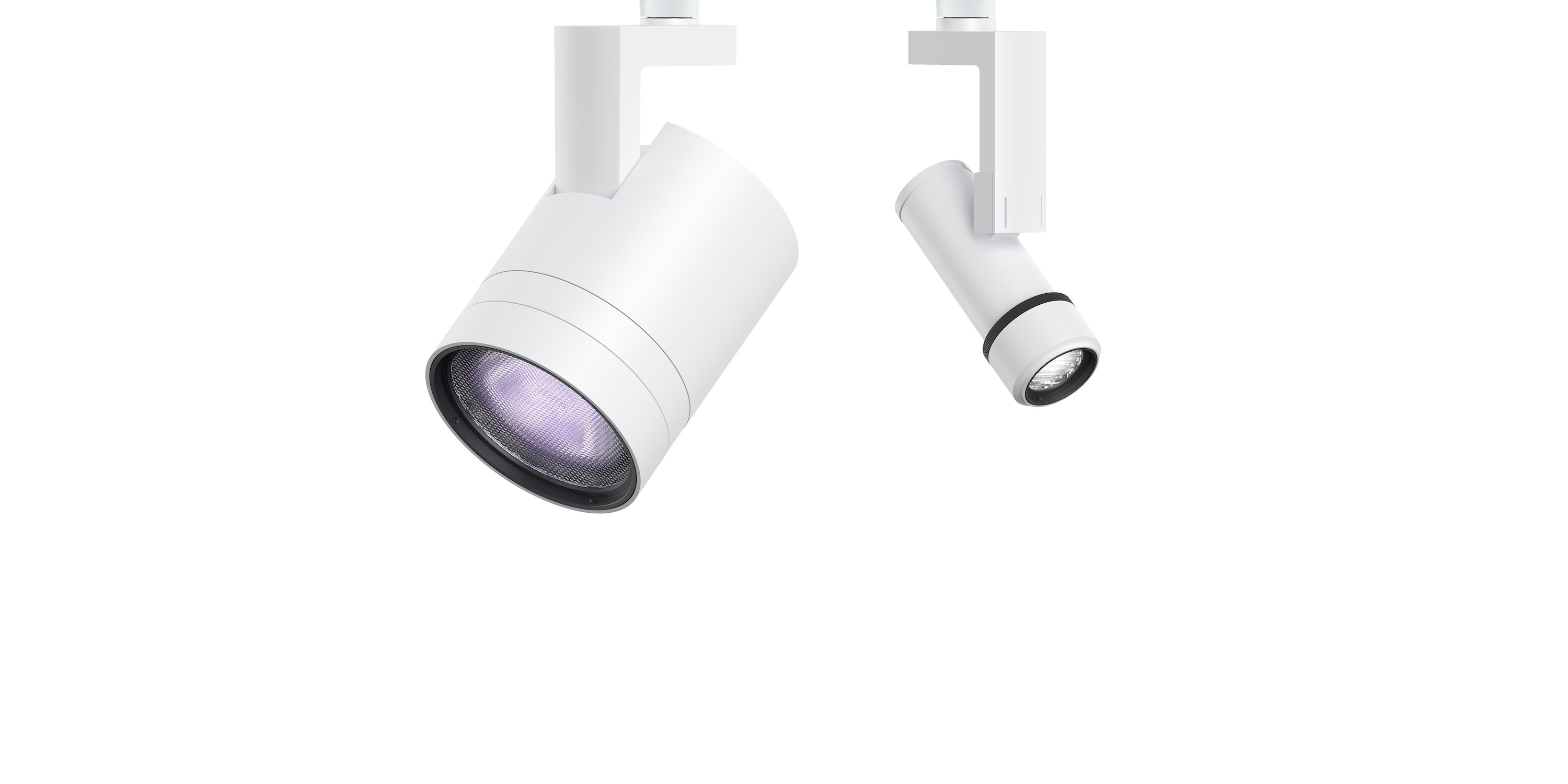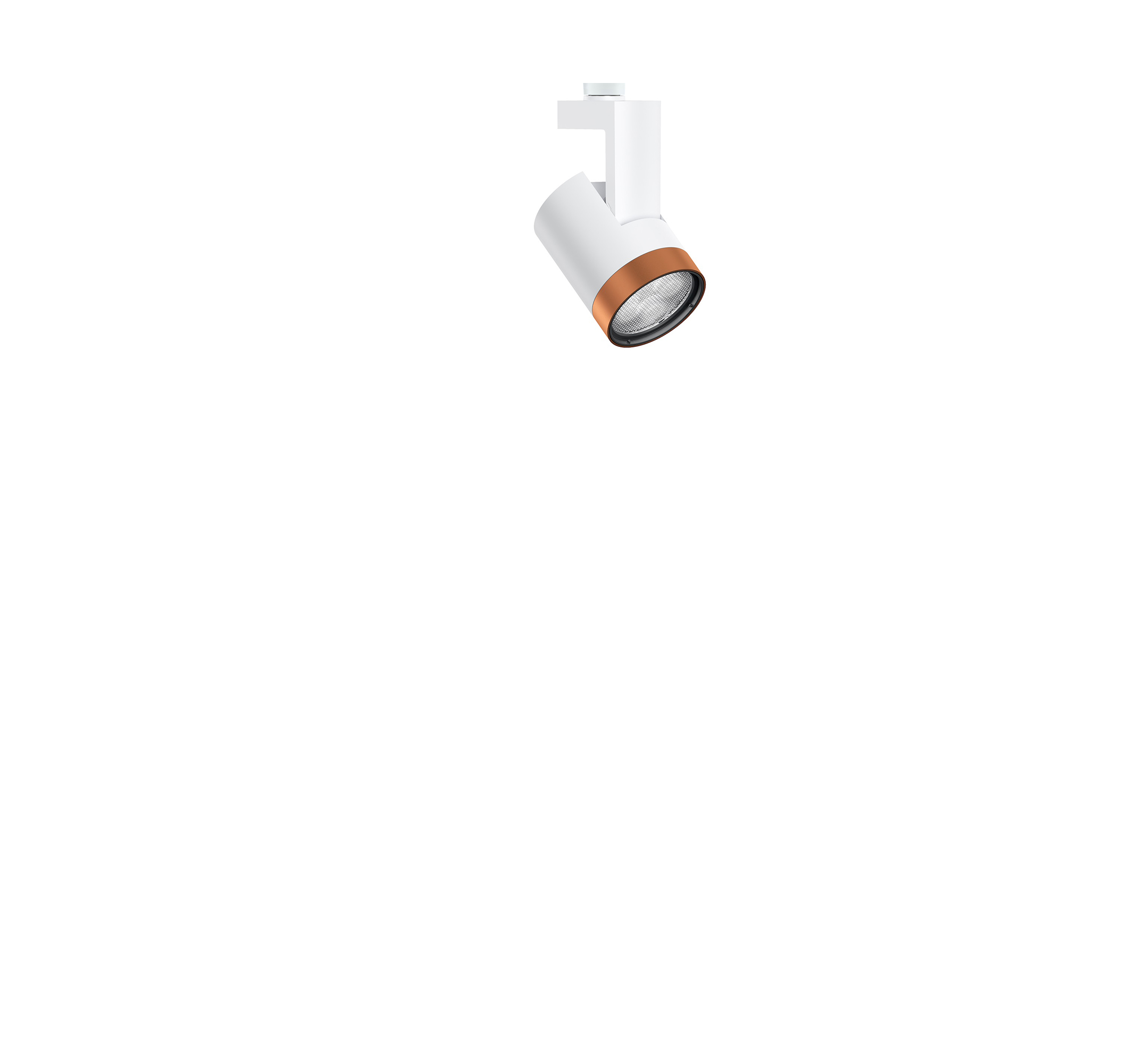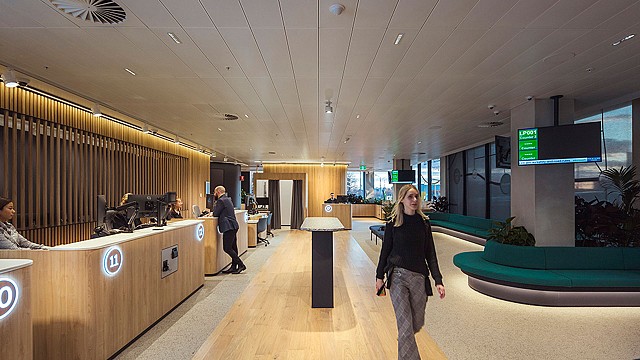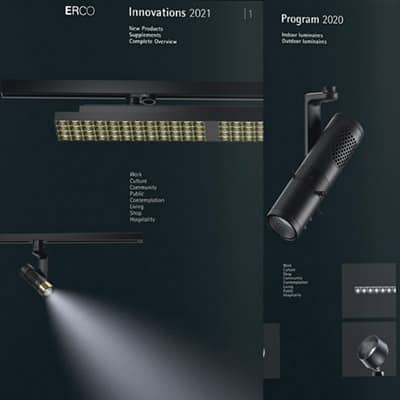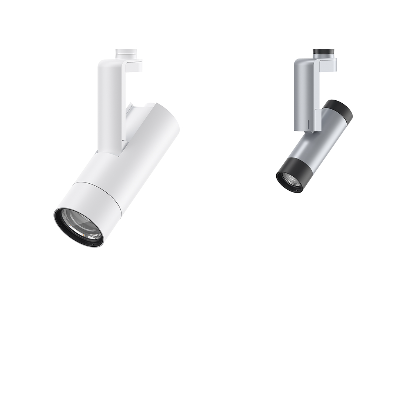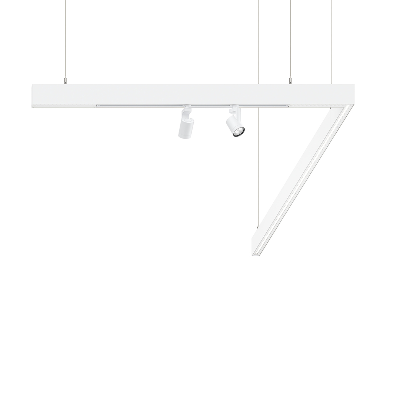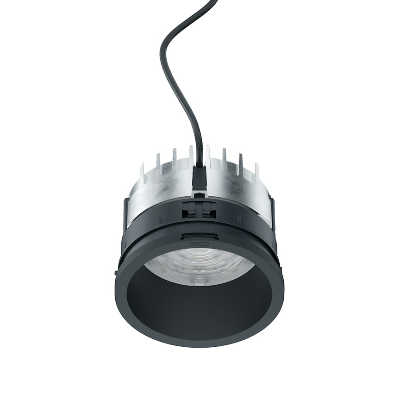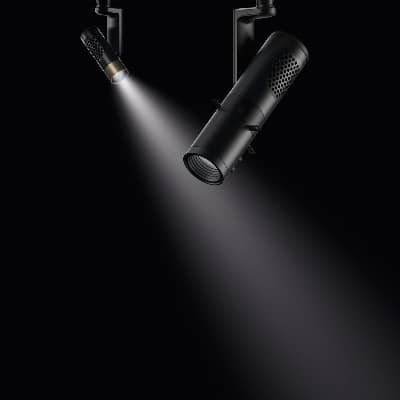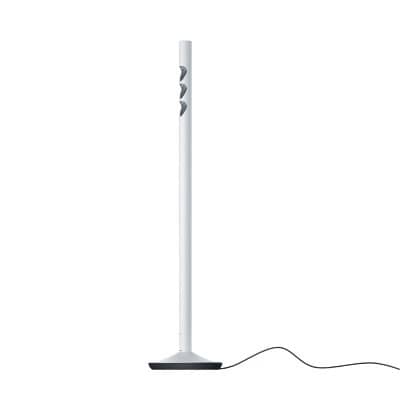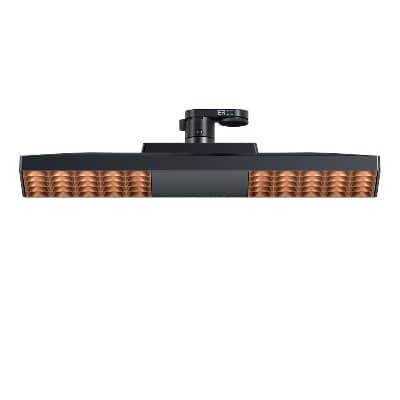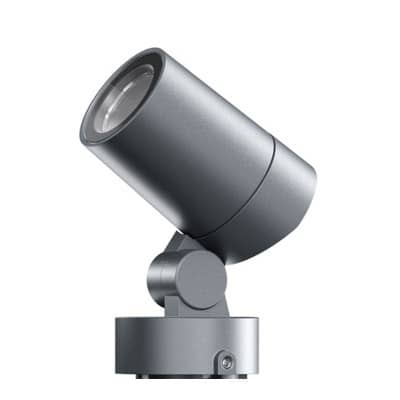Parscan
At ERCO, the name Parscan has been synonymous with versatile spotlights that emit outstanding quality of light from elegant cylindrical housings for almost 20 years. The new generations include Parscan 48V for Minirail 48V track and Parscan 120V New for 120V track—in every respect offering more Parscan than ever before. In order to optimally illuminate exhibits in museums and galleries, architects and lighting designers use spotlights mounted on track, as has been done for generations. But such systems are also used in modern boutique offices to set lighting accents, wallwash wall planes and emphasize functional areas in foyers via brightness contrasts. Spotlights with a basic cylindrical construction have long been an archetype - which is all the more reason for high standards of innovative technology and superior details. ERCO responds to this demand with its new generation of the Parscan range of spotlights, further developed in all aspects.
Typical features of Parscan's simple and elegant design ensure a high recognition factor: for example the angled support bracket that fits flush into the housing when the spotlight is aligned vertically downwards. Compared to its predecessors and the mass of generic competitor products, the progress is reflected in visibly increased effectiveness and quality of light, greater flexibility in application and more control digitality. In the Parscan spotlights ERCO uses re-engineered, even more precise and finely structured Spherolit lenses for controlling the light – in no less than 12 practical light distributions that, as compact lens units, can be exchanged without tools.
Brings more light to the target area
The superior quality of the Spherolit optics is only inadequately expressed in lumens per watt (lm/W) of the luminaire efficiency, which ultimately only specifies how much light is emitted from the luminaire. Laboratory measurements by ERCO confirm the visual impression of spill light-free, exceptionally uniform and high-output light beams: Parscan spotlights are leaders in terms of illuminance on the target surface, expressed in lux per watt (fc/W). In other words: Spherolit technology provides light only where it is intended. With this level of effectiveness and precision, energy-efficient lighting concepts can be realized that conserve resources and at the same time achieve impressive effects.
Brings more variation to lighting concepts
The broad technical platform of Parscan makes this quality of light accessible for a wide range of applications. Spotlights in sizes XS, S and M will be available for the market launch, and further sizes from L to XXL will follow in the course of the year. This means that lumen packages are available for any size and dimension of project.
The two Parscan ranges cover different applications: Parscan 48V is particularly suitable for lower rooms, for example in boutique offices, thanks to the miniaturized dimensions of its adapter and in combination with the Minirail 48V track. Parscan 120V New for 120V track is a universal system in applications where versatility and a minimalist design are required—for example in museum or gallery lighting.
Customized in next to no time
For all Parscan models ERCO offers a choice of six LED light spectra with color temperatures from 2700K to 4000K and a color rendering index (CRI) of up to 97 at 3000K. Those requiring even finer gradations can use the four conversion filters available as accessories—or opt directly for Tunable White or RGBW technology for colored lighting designs.
The 12 distributions include five rotationally symmetric distributions ranging from narrow spot (5°) to extra wide flood (82°) as well as special optics: as a core expertise of ERCO, a wallwash optic provides high quality, extremely uniform and efficient vertical illumination. In addition, there are also two floodlights with oval beams, continuously adjustable zoom spotlights with spot (16°- 68°) or oval (25°x 63° - 65°x 68°) beams and two contour spotlights with different focal distances. The distributions can also be modulated with soft focus or sculpture lenses as accessories. The optics are mounted in compact lens units that are exchanged without tools—this is ideal for building up a flexible pool of luminaires for e.g. temporary exhibitions.
Wireless, dynamic and digital
Parscan is just as flexible and customizable in terms of control as it is with light colors and distributions. Four control modes can be selected: wireless with Casambi Bluetooth and Zigbee 3.0. With the 0-10V Casambi bridge (available on request) you can also control your 48V Bluetooth luminaires via 0-10V. Three add-on control units offer you additional flexibility. By exchanging the add-on control unit on the rear of the luminaire you can change the control mode of your Parscan spotlight at any time, for example from On-Board Dim to wireless Casambi Bluetooth.
For the new generation of the spotlight range it can thus be said: Parscan provides architects and lighting designers with universal tools that meet the highest quality requirements—and, thanks to their intelligent system design, luminaires that are adaptable to the lighting tasks of the future.
At ERCO, the name Parscan has been synonymous with versatile spotlights that emit outstanding quality of light from elegant cylindrical housings for almost 20 years. The new generations include Parscan 48V for Minirail 48V track and Parscan 120V New for 120V track—in every respect offering more Parscan than ever before. In order to optimally illuminate exhibits in museums and galleries, architects and lighting designers use spotlights mounted on track, as has been done for generations. But such systems are also used in modern boutique offices to set lighting accents, wallwash wall planes and emphasize functional areas in foyers via brightness contrasts. Spotlights with a basic cylindrical construction have long been an archetype - which is all the more reason for high standards of innovative technology and superior details. ERCO responds to this demand with its new generation of the Parscan range of spotlights, further developed in all aspects.
Typical features of Parscan's simple and elegant design ensure a high recognition factor: for example the angled support bracket that fits flush into the housing when the spotlight is aligned vertically downwards. Compared to its predecessors and the mass of generic competitor products, the progress is reflected in visibly increased effectiveness and quality of light, greater flexibility in application and more control digitality. In the Parscan spotlights ERCO uses re-engineered, even more precise and finely structured Spherolit lenses for controlling the light – in no less than 12 practical light distributions that, as compact lens units, can be exchanged without tools.
Brings more light to the target area
The superior quality of the Spherolit optics is only inadequately expressed in lumens per watt (lm/W) of the luminaire efficiency, which ultimately only specifies how much light is emitted from the luminaire. Laboratory measurements by ERCO confirm the visual impression of spill light-free, exceptionally uniform and high-output light beams: Parscan spotlights are leaders in terms of illuminance on the target surface, expressed in lux per watt (fc/W). In other words: Spherolit technology provides light only where it is intended. With this level of effectiveness and precision, energy-efficient lighting concepts can be realized that conserve resources and at the same time achieve impressive effects.
Brings more variation to lighting concepts
The broad technical platform of Parscan makes this quality of light accessible for a wide range of applications. Spotlights in sizes XS, S and M will be available for the market launch, and further sizes from L to XXL will follow in the course of the year. This means that lumen packages are available for any size and dimension of project.
The two Parscan ranges cover different applications: Parscan 48V is particularly suitable for lower rooms, for example in boutique offices, thanks to the miniaturized dimensions of its adapter and in combination with the Minirail 48V track. Parscan 120V New for 120V track is a universal system in applications where versatility and a minimalist design are required—for example in museum or gallery lighting.
Customized in next to no time
For all Parscan models ERCO offers a choice of six LED light spectra with color temperatures from 2700K to 4000K and a color rendering index (CRI) of up to 97 at 3000K. Those requiring even finer gradations can use the four conversion filters available as accessories—or opt directly for Tunable White or RGBW technology for colored lighting designs.
The 12 distributions include five rotationally symmetric distributions ranging from narrow spot (5°) to extra wide flood (82°) as well as special optics: as a core expertise of ERCO, a wallwash optic provides high quality, extremely uniform and efficient vertical illumination. In addition, there are also two floodlights with oval beams, continuously adjustable zoom spotlights with spot (16°- 68°) or oval (25°x 63° - 65°x 68°) beams and two contour spotlights with different focal distances. The distributions can also be modulated with soft focus or sculpture lenses as accessories. The optics are mounted in compact lens units that are exchanged without tools—this is ideal for building up a flexible pool of luminaires for e.g. temporary exhibitions.
Wireless, dynamic and digital
Parscan is just as flexible and customizable in terms of control as it is with light colors and distributions. Four control modes can be selected: wireless with Casambi Bluetooth and Zigbee 3.0. With the 0-10V Casambi bridge (available on request) you can also control your 48V Bluetooth luminaires via 0-10V. Three add-on control units offer you additional flexibility. By exchanging the add-on control unit on the rear of the luminaire you can change the control mode of your Parscan spotlight at any time, for example from On-Board Dim to wireless Casambi Bluetooth.
For the new generation of the spotlight range it can thus be said: Parscan provides architects and lighting designers with universal tools that meet the highest quality requirements—and, thanks to their intelligent system design, luminaires that are adaptable to the lighting tasks of the future.







 Sign in with email
Sign in with email



